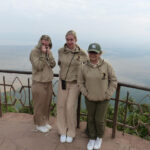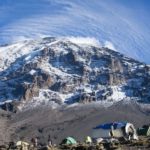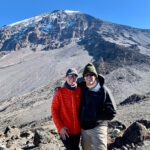Climbing Mount Kilimanjaro
Weight doesn’t determine success on Mount Kilimanjaro. With determination and proper training, anyone can conquer the climb. While physical fitness is crucial, it’s not just about being thin or fit. Prepare for your Kilimanjaro ascent with a dedicated training regimen months in advance to ensure success. Here are some tips to kickstart your Kilimanjaro training plan:
MAKE USE OF THE STAIRS
Enhance your workout regimen with stair climbing to prep for Mount Kilimanjaro. While cardio and treadmill exercises are vital, don’t overlook the benefits of stair training. Given Kilimanjaro’s demanding terrain with frequent elevation changes, building strong thigh muscles is key. So, don’t skip the stairs—incorporate them for a focused and effective workout!
INCREASE YOUR LUNG CAPACITY
As you ascend Mount Kilimanjaro, the air becomes thinner, making it crucial to strengthen your lungs alongside your legs. Boost your lung capacity with cardio exercises, such as using machines at the gym or engaging in Pilates and yoga coupled with deep breathing exercises. This holistic approach will prepare your respiratory system for the challenges of high-altitude trekking.
WORK OUT ON YOUR ARMS
During your Mount Kilimanjaro climb, the upper body movements can strain your shoulders and arms. That’s why it’s crucial to incorporate arm workouts into your training regimen. Strengthening your arm muscles will help you endure the demands of the journey. Prepare for the long day ahead on Kilimanjaro by including exercises tailored to build arm strength!
GET USED TO WALKING OUTSIDE
Training on rugged and uneven trails can significantly improve your pace during your Kilimanjaro hike. Wear your Kilimanjaro gear and boots during practice walks to acclimate to the weight and feel of multiple layers and a backpack. Uphill walking is especially beneficial for strengthening calf muscles, and preparing you for the challenges of steep ascents on the mountain.
FOCUS ON DURATION VS. INTENSITY
Endurance training is crucial for preparing for Kilimanjaro. Aim for six-hour walking sessions during training, with regular breaks at one-hour intervals. Guides typically schedule short group rests every hour during the climb, adjusting departure times as needed to ensure timely arrival at the next campsite.












